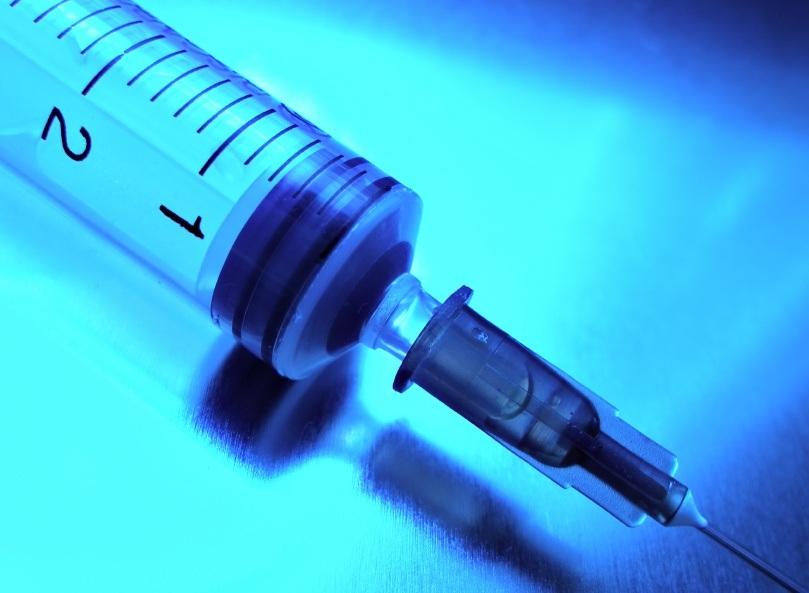- News
- Reviews
- Bikes
- Components
- Bar tape & grips
- Bottom brackets
- Brake & gear cables
- Brake & STI levers
- Brake pads & spares
- Brakes
- Cassettes & freewheels
- Chains
- Chainsets & chainrings
- Derailleurs - front
- Derailleurs - rear
- Forks
- Gear levers & shifters
- Groupsets
- Handlebars & extensions
- Headsets
- Hubs
- Inner tubes
- Pedals
- Quick releases & skewers
- Saddles
- Seatposts
- Stems
- Wheels
- Tyres
- Tubeless valves
- Accessories
- Accessories - misc
- Computer mounts
- Bags
- Bar ends
- Bike bags & cases
- Bottle cages
- Bottles
- Cameras
- Car racks
- Child seats
- Computers
- Glasses
- GPS units
- Helmets
- Lights - front
- Lights - rear
- Lights - sets
- Locks
- Mirrors
- Mudguards
- Racks
- Pumps & CO2 inflators
- Puncture kits
- Reflectives
- Smart watches
- Stands and racks
- Trailers
- Clothing
- Health, fitness and nutrition
- Tools and workshop
- Miscellaneous
- Buyers Guides
- Features
- Forum
- Recommends
- Podcast
news
 Syringe
SyringeVania Rossi's B sample returns "non-positive" result for CERA
CONI, the Italian Olympic Committee, has announced that a B sample taken from cyclocross rider Vania Rossi, who tested positive for third generation EPO CERA following her second-place finish in the Italian national cyclo-cross championships in January, has returned a “non-negative” result.
The surprise finding – it is the first time that the test of a B sample following a positive A sample for CERA has not returned a similar result at CONI’s laboratory in Rome – provides evidence that traces of CERA deteriorate more quickly in urine than they do in blood, according to the laboratory’s director, Francesco Botrè, and the case against Rossi remains open.
Rossi, who has maintained her innocence from the outset, is the former partner of former Saunier Duval-Prodir rider Riccardo Riccò, with whom she has a son. Riccò himself tested positive for CERA during the 2008 Tour de France and only last month returned from a 20-month suspension.
The pair broke up following Rossi’s positive test for the same substance, with Riccò saying that there could be no reconciliation between the couple until Rossi proved she was completely innocent of the charges leveled against her.
CONI’s head of antidoping, Ettore Torri, told Italian sports daily La Gazzetta dello Sport that he intended to examine the case in the coming days before deciding how to proceed.
Botrè said that the World Antidoping Agency (WADA) had been immediately informed of the result of the B sample, given the scientific implications of his belief that the non-negative result demonstrates a quicker degradation of traces of CERA in urine compared to blood.
Referring to the testing of the B sample, which was carried out between 29 March and 2 April at the laboratory in Rome with the result, like that of the A sample, confirmed by the French national anti-doping laboratory in Chatenay-Malabry, Botrè said that it didn’t mean “there was no CERA; only that [the level] wasn’t sufficient to satisfy WADA’s minimum levels.”
He added that a further test had been undertaken with the agreement of the athlete’s defence team, and that “in the relevant gel there was evidence, albeit weak, in the CERA zone. All of this indicates a process of degradation of CERA in urine which, being more rapid than in other positive samples for the same substance, reduces the signal’s intensity.”
Bloody hell... How are you doing now?
And I liked endura too. Got a nice long sleeve mostly merino long sleeve a little while back, in orange.
No, the Ebay lights have been around for several years, this Lezyne light just appeared.
They shouldn't worry - the second part of the "tariff" refrain is "they can make it in US and they'll do very well".
"At the going down of the sun, it will get in our eyes and cause us to crash into things."
Been living in the area thirty years now and Brixton Cycles (and local riders wearing their famed Rastafarian colours jersey) has been an iconic...
Does the "super-loud yellow" also help alert (non-deaf / non-earbud-wearing) pedestrians? Or will it just mean dogs bark at me?
One thing that bothers me is the use of antidepressant med and driving, it never gets picked up by police. Most of these types of medicines state...
Indeed - but again these are perhaps questions we should keep asking. Even if the immediate answer is "well we are where we are" or "how on earth...